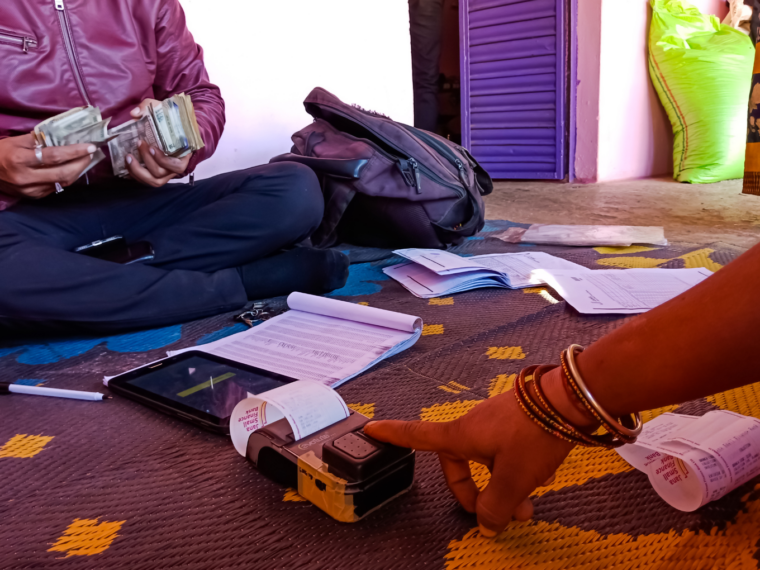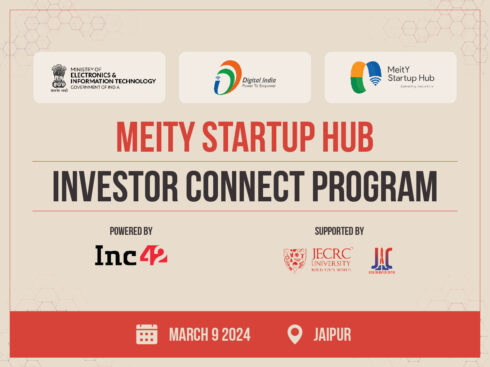
SUMMARY
The growing digitisation helped the country’s microfinance industry grow over 16 times in the last decade, and this presents an opportunity for the fintech players
Fintech startups have the capability to build platforms for digitally processing loans, and partnership with microfinance institutions can help them penetrate deeper into the rural market
Industry experts believe that digital lending players can succeed in the rural market by partnering with microfinance companies, just like the insurtech players
The microfinance sector has grown more than 16 times to INR 2,85,441 Cr in 2022 from INR 17,264 Cr in 2012. Digitisation was a key factor that contributed to this multifold growth. Acknowledging the role of digitisation, India Microfinance Review FY2021-22 said, “Nearly 100% of microfinance loans are being disbursed digitally directly to the borrowers’ bank account.”
The microfinance model today deploys an optimum mix of technology and human touch. Microfinance institutions have invested in a robust technology framework for data upload. However, it is the assisted digital interface that is making a big difference.
Microfinance and fintech complement each other well. Over the years, microfinance players have been able to penetrate deep into the rural market. According to Microfinance Institutions Network (MFIN), the industry served 6.2 Cr unique borrowers through 12 Cr loan accounts as of September 30, 2022 this year. Interestingly, around 64% of the portfolio is concentrated in the eastern, northeastern and southern regions of the country.
“Fintech players can piggyback on microfinance distribution reach to provide products/ services which otherwise would be commercially unviable,” said Sushma Kaushik, partner at Aavishkaar Capital, the impact-investing arm of the Aavishkaar Group.
Why The Rural Market Is A Different Cup of Tea For Fintech Startups
The challenges of serving the rural market are somewhat different even if demands are the same as in the urban market. Easy access to formal credit, seamless money transfer facilities and simple investment products are some of the demands. The key difference is in the ticket size as income levels are lower than in urban areas.
One needs to service a much larger customer base in the rural market for the same result as in the urban market, which can increase the cost of service.
“The level of awareness is far lower towards financial products in general and worse in the rural segment,” Kaushik noted.
Role Of Fintech Startups In Hinterlands
Fintech startups can play a key role in multiple ways in meeting the rural market’s requirements of easy access to credit, and financial inclusion, among others. Accessing and analysing alternative data sources in the absence of banking records to decide creditworthiness is one way.
Amit Mande, chief revenue officer of technology-focused small business lending platform U GRO, cited the example of India Stack as an alternative data source. Players can also entrench themselves in the supply chain or payments ecosystems for alternate data, he added.
Besides, fintech startups can build platforms to process loan applications digitally and penetrate deeper into the rural market. “Most importantly, they have the capability to create customised risk models on the back of data to deliver credit to the segment,” Mande said.
Fintech companies also have the capability to create customised risk models for small businesses based on data analysis.
Mande said collaboration with fintech companies and partners has enhanced U GRO’s ability to extend data-backed and customised credit solutions to over 150 small, Tier-II towns.
Sharing U GRO Capital’s experience of lending to small businesses in small towns and rural India, Mande said that the focus on the sector has helped the company build sector- and sub-sector-specific risk models that help extend credit at the right price.
Stressing the need to move from collateral-based lending to cash flow-based credit, he said, “Our risk models understand that cash flows, margins and profitability will be different for a pharmacy and a dentist for a similar size of operations or turnover.”
Simple Innovation To Resolve Rural India Riddle
Challenges in rural markets are unique and so are some of the innovations of rural fintech startups. Take, for instance, the Adhikari model of Spice Money.
The Spice Money platform rides on the JAM trinity (Jan Dhan, Aadhaar and Mobile). The rural fintech startup gets merchants, whom it calls Spice Money Adhikari, who can access consumers and MSMEs at a low cost and enable banks and NBFCs to lend to them.
“We have onboarded over 10 Lakh Adhikaris across the country who cover 95% of the rural PIN codes and we are present in over 5,000 small towns and close to about two-and-a-half lakh villages,” said Dilip Modi, founder of Spice Money.
Spice Money appoints partners at a micro-geography level and onboard entrepreneurs as Adhikari.
“Today if I look at the larger merchant ecosystem in rural India, there are a number of people who run small stores…nearly 20-30 Mn people running small stores. So, Adhikari as a merchant, and how they can use digital as a platform to add value, is significant. So, we call Adhikari a digital entrepreneur,” Modi said.
The cost of operations is a big deterrent for many to foray into the rural market. However, the expenses are not high in the Adhikari model, according to Modi. Most of it is linked to offering revenue share to partners who help acquire Adhikaris. Besides, the cost does not rise as the number of Adhikaris grows.
“There is operating leverage in this business because the fixed cost doesn’t grow as proportional to the transactions and the revenue and the gross margin,” Modi said.
Digital Lending Can Take A Leaf Out Of Insurtech’s Book
Insurtech players have been riding on the back of microfinance players to sell insurance products. This can be repeated successfully for digital lending and banking inclusion as well.
“Absolutely, the same experiment can and should work. But just like insurtech, it needs to be a symbiotic relation which ends up benefiting both players in addition to the customers,” said Kaushik of Aavishkaar.
Insurtech players have been largely focused on credit-linked insurance and hospi-cash products. They can do a lot more, like shop insurance, livestock insurance, cycle insurance, among others, according to Kaushik.


























